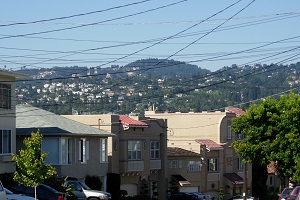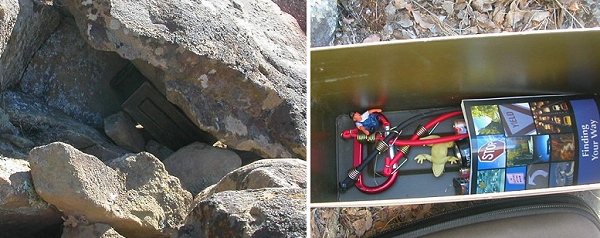 Get out of town and learn about Round Top, Oakland's own volcano, with an EarthCache. All photos by Andrew Alden.The 21st-century sport of geocaching is providing a new way to teach and learn about geology. Geocaching prompts people sitting at a computer to do what our parents always urged—go out and play. And a new twist in the game replaces the traditional payoff of choosing a trinket from a hidden stash with a short personal lecture on the rocks at your feet or the landscape around you. This type of geocache is called an EarthCache.
Get out of town and learn about Round Top, Oakland's own volcano, with an EarthCache. All photos by Andrew Alden.The 21st-century sport of geocaching is providing a new way to teach and learn about geology. Geocaching prompts people sitting at a computer to do what our parents always urged—go out and play. And a new twist in the game replaces the traditional payoff of choosing a trinket from a hidden stash with a short personal lecture on the rocks at your feet or the landscape around you. This type of geocache is called an EarthCache.
By now you must have heard of geocaching, the self-guided sport that takes players into the great outdoors by combining GPS wayfinding technology with geographic clues on the web. In the basic game, you get the location of a hidden box on a geocaching website—just a latitude and longitude. Using your GPS unit, you make your way to that spot, find the container and score a point by recording the achievement.
This is a good way to have fun in the outdoors with a minimum of rules and structure. Millions of people have played, and more than a million geocaches are registered around the world.
The first time I was exposed to geocaching was in 2004: I was out to explore the southern Diablo Range, and my friend came along to find some caches there.


